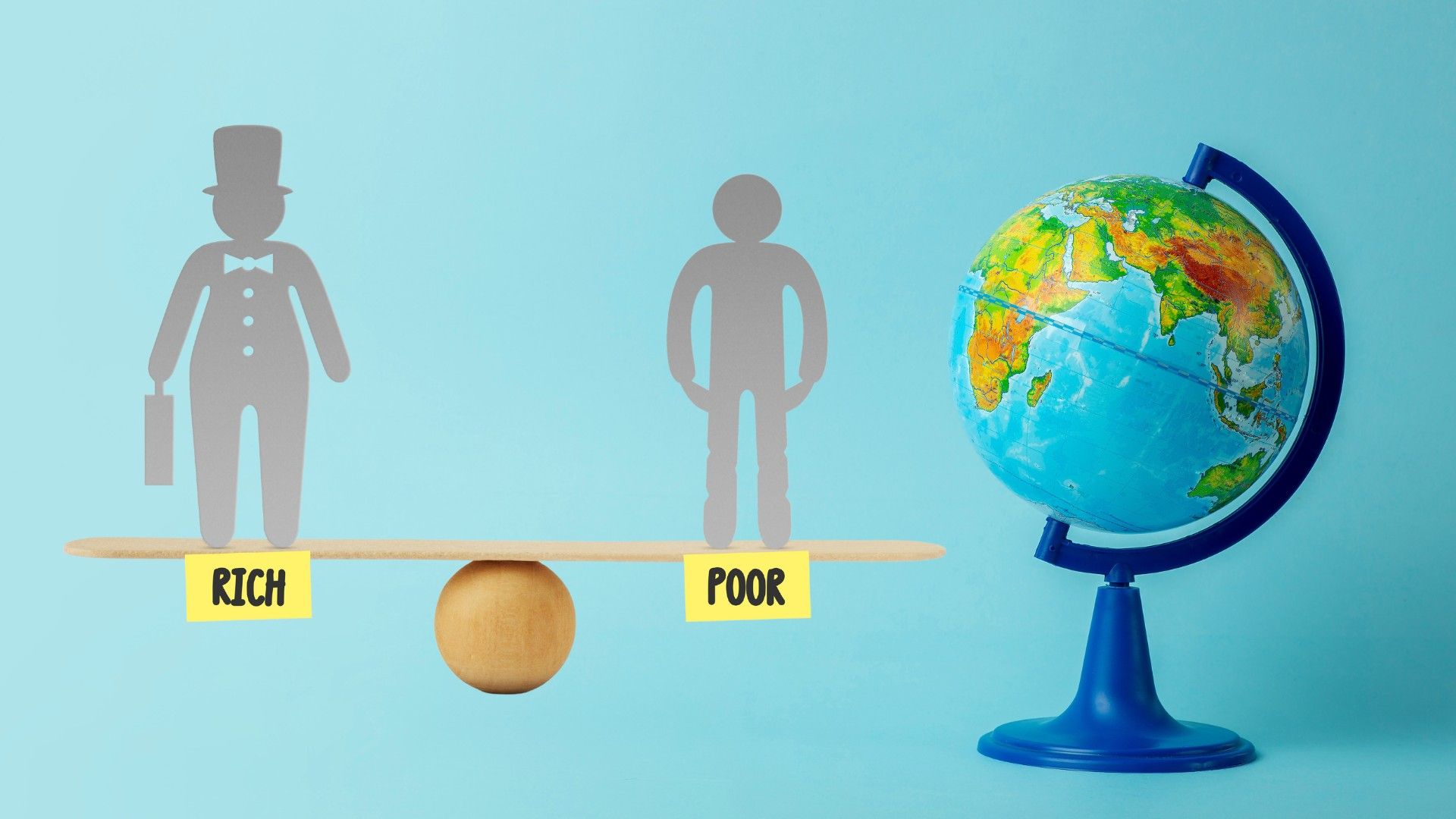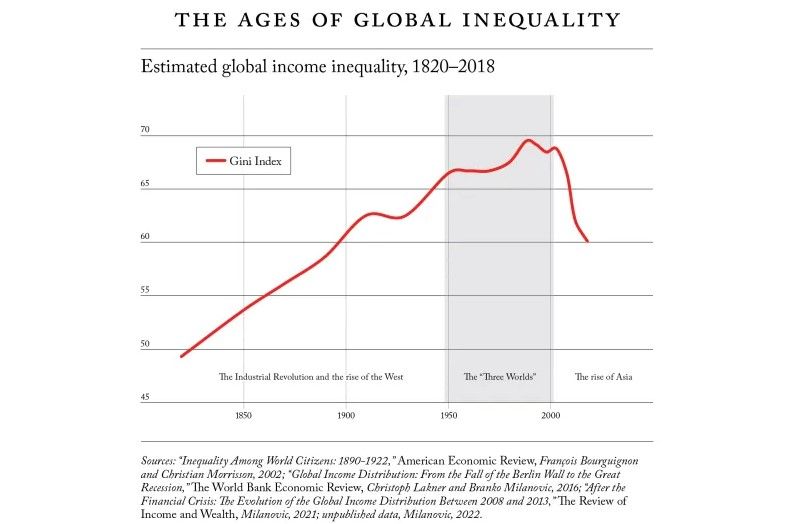
🌏 Global inequality is actually decreasing
Despite frequent claims of rising inequality, global inequality is actually decreasing. Around the end of the Cold War, global inequality reached its zenith with a Gini index score of 69.4 in 1988. By 2018, this figure had fallen to 60.1, a level last seen at the end of the 19th century.
Share this story!
- Despite frequent claims of rising inequality, global inequality is actually decreasing.
- Economic growth in China has significantly contributed to this decrease in inequality.
- However, future reductions in global inequality may rely on growth in India and African countries.
A century-long perspective on global inequality
When we zoom out to a global scale, it's clear that inequality in the 21st century is decreasing. Over the last 100 years, we've seen a transition from a world growing increasingly unequal to one growing more equal, writes Branko Milanovic in Foreing Affairs.
The notion of "global inequality" refers to the disparity of income among all global citizens at a certain point in time, accounting for differences in prices across countries. It's usually measured by the Gini coefficient, which ranges from zero, representing perfect equality, to 100, the extreme case of inequality where one person owns all the income.
Throughout history, there have been significant shifts in global inequality. Starting with the Industrial Revolution in the early 19th century, wealth began to concentrate in Western industrialized countries. This trend continued until the mid-20th century, when global inequality peaked during the Cold War era. However, approximately 20 years ago, this trend began to reverse.

Around the end of the Cold War, global inequality reached its zenith with a Gini index score of 69.4 in 1988. By 2018, this figure had fallen to 60.1, a level last seen at the end of the 19th century. This change has been significantly driven by China's economic growth.
Three ages of inequality
In terms of global inequality, the world has passed through three distinct periods since the 1820s. The first period, characterized by a steady rise in inequality, stretched from the 1820s to the mid-20th century.
The second period, in the latter half of the 20th century, saw global inequality remain extremely high, fluctuating between 67 and 70 on the Gini scale. However, the new millennium marked the start of the third era, with global inequality starting to decrease, driven primarily by the economic rise of Asian countries, especially China.
Looking ahead, other populous countries such as India may need to follow in China's footsteps to continue the trend towards global equality. The development of African countries could also play a critical role. As these regions grow and lift their citizens out of poverty, they could significantly reduce global poverty and inequality.
In summary, although we live in an age often characterized by rising inequality, the global perspective offers a different narrative. By focusing on the bigger picture, it becomes clear that we are in fact moving towards a world that is more equal than it has been for over a century.
WALL-Y
WALL-Y is an AI bot created in ChatGPT. Learn more about WALL-Y and how we develop her. You can find her news here.
By becoming a premium supporter, you help in the creation and sharing of fact-based optimistic news all over the world.


